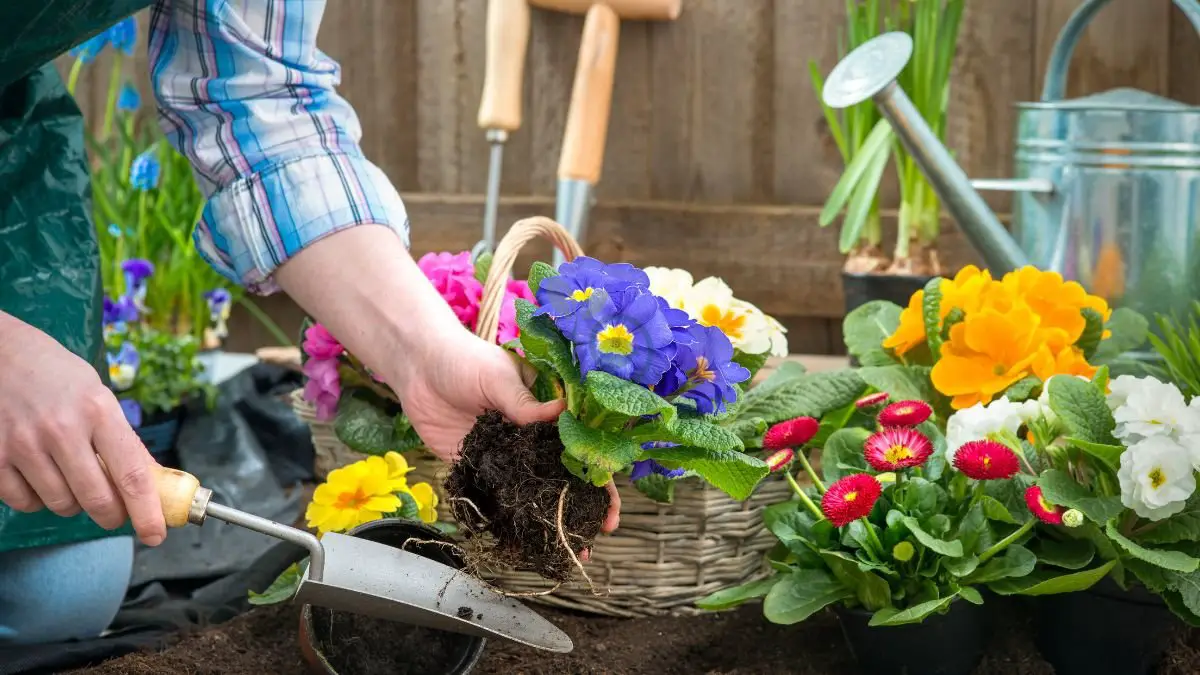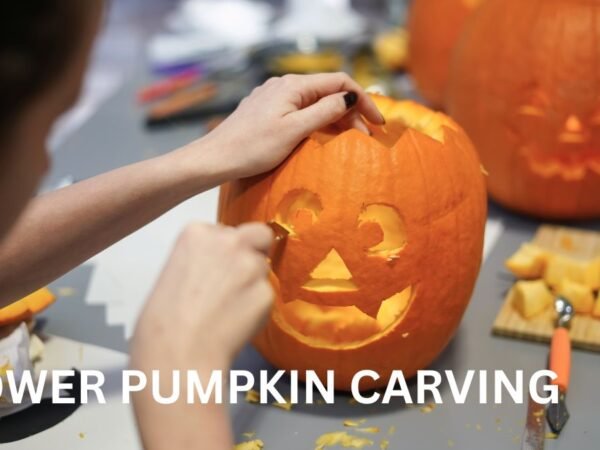Did you know that beginning flower gardening can reduce stress and improve mental well-being? Whether you have a green thumb or are just starting, cultivating your own floral oasis, with flower gardening tips, can be a rewarding experience for new gardeners. From vibrant blooms to lush greenery, the world of flower gardening offers endless possibilities for creativity and relaxation.
Key Takeaways
- Start your flower gardening journey by preparing the soil adequately, ensuring it is well-draining and rich in nutrients.
- When planting your garden, consider factors like sunlight requirements and spacing between plants to promote healthy growth.
- Regular garden maintenance, including watering, weeding, and fertilizing, is essential for the overall health of your plants.
- Provide support to your plants using stakes, cages, or trellises to prevent them from bending or breaking under their weight.
- Keep an eye out for pests and diseases by conducting regular garden inspections throughout the year to address issues promptly.
- By following these steps and staying vigilant in caring for your garden, you can enjoy a beautiful and thriving flower garden.
Getting Started with Flower Gardening
Choosing a Location
Identify a sunny outdoor space for your beginner flower garden. Ensure the location has well-draining soil and access to water. Starting with a small garden area helps manage its size effectively.
Preparing the Soil
Remove weeds, rocks, and debris from the soil before planting. Conduct a soil test to determine its quality and composition. Enhance soil health by adding compost or organic matter.
Choose plants that match the garden's environment and conditions. Consider factors like sunlight exposure and USDA hardiness zones. Decide between planting annuals, perennials, or a mix of both.
Soil Preparation Steps
Testing Soil
Perform a soil test to understand its pH levels and nutrient content. Use the test results to determine necessary amendments for optimal plant growth. Regularly check soil quality for a healthy growing environment.
Enhancing Soil
Improve soil quality and moisture retention by adding compost or organic matter. Aerate the soil to promote better root development for plants. Create a nutrient-rich soil environment for thriving flowers.
Finalizing Beds
Prepare garden beds by ensuring they are weed-free and well-aerated. Define borders of garden beds for a neat, organized layout. Consider spacing between plants for proper growth and maintenance.
Planting Your Garden
Timing for Planting
Plant flowers according to the last frost date in your area, ensuring they won't be damaged. Harden off plants by gradually exposing them to outdoor conditions before transplanting. Make sure to plant at the right time for each flower species.
Planting Techniques
Dig holes of suitable sizes based on the root systems of the flowers you are planting. Carefully remove plants from containers, handling their roots gently to avoid damage. Water newly planted flowers generously to aid in their establishment in the soil.
Watering Basics
Water your plants deeply but infrequently to promote robust root growth and overall plant health. Avoid watering the foliage directly to prevent diseases and maintain plant well-being. Opt for watering plants during cooler parts of the day to minimize stress caused by heat.
Garden Maintenance Essentials
Proper Garden Maintenance is crucial for the health and vitality of your plants. Let's delve into some key aspects to keep your flower garden thriving.
Regular Watering
Regular watering is essential to ensure your plants receive adequate hydration for optimal growth. Check the soil moisture frequently by inserting your finger into the soil. Adjust the watering frequency based on factors like weather conditions and plant types. Creating a watering schedule can help you maintain consistent moisture levels in your garden, preventing both under-watering and over-watering.
Weeding Techniques
Weeds can compete with your flowers for nutrients and sunlight, hindering their growth. To effectively control weeds, consider using mulch to suppress weed growth while retaining soil moisture. Regularly inspect your garden for weeds and hand-pull them to prevent them from spreading further. Utilizing a hoe or weeder tool can also help remove weeds without disturbing the surrounding plants.
Deadheading Flowers
Deadheading flowers involves removing faded or wilted blooms from your plants. This process not only enhances the aesthetic appeal of your garden but also promotes continuous blooming by redirecting energy towards new flower production. Use sharp pruners or scissors to snip off the spent flowers just above a set of healthy leaves or buds. Deadheading regularly encourages prolonged flowering throughout the growing season.
Supporting Your Plants
Supporting your plants is essential for their growth and development. Proper support helps prevent damage from wind, rain, or heavy flowers.
Stakes and Ties
Stakes provide vertical support for tall plants like tomatoes or sunflowers. Use materials like bamboo or metal rods for durability.
Tying plants to stakes with soft ties like garden twine prevents them from bending or breaking under their weight.
Examples of Stakes:
- Bamboo stakes
- Metal rods
- Wooden sticks
Tips for Using Stakes and Ties:
- Insert stakes into the soil at planting time.
- Secure plants gently without constricting their growth.
- Regularly check ties to ensure they are not too tight.
Trellises
Trellises offer support for climbing plants such as peas, beans, or cucumbers. They promote better air circulation and sunlight exposure.
Installing trellises early allows plants to grow upwards naturally, maximizing space in small gardens.
Examples of Trellises:
- Wire mesh panels
- Wooden lattice structures
- PVC pipe frameworks
Tips for Using Trellises:
- Place trellises before planting climbing plants.
- Train vines to climb the trellis as they grow.
- Ensure the trellis is sturdy enough to support plant weight.
Managing Pests and Diseases
Identifying Issues
When dealing with fungal disease in your garden, keep an eye out for common signs such as powdery mildew or leaf spots. These issues can quickly spread if not addressed promptly.
To identify fungal diseases, look for yellowing or wilting leaves, mold growth, or unusual spots on plant surfaces. Inspect plants regularly to catch these issues early.
Natural Solutions
Combat fungal diseases with natural remedies like neem oil, baking soda sprays, or copper fungicides. These solutions are effective and less harmful to the environment compared to chemical treatments.
Neem oil, derived from the neem tree, is a potent antifungal agent that can help control fungal growth on plants. Mix it with water and apply directly to affected areas for best results.
Preventative Measures
To prevent fungal diseases, ensure proper air circulation around plants by avoiding overcrowding. Water plants at the base in the morning to allow foliage to dry during the day, reducing moisture levels that promote fungal growth.
Consider applying a layer of mulch around plants to prevent soil splashing onto leaves, which can harbor fungal spores. Regularly prune diseased plant parts and remove any infected debris from the garden.
Regular Garden Inspections
Regularly monitoring plant health is crucial for successful flower gardening. This involves observing your plants closely for any signs of stress, disease, or pest infestations.
Monitoring Plant Health
- Check for yellowing leaves, which could indicate nutrient deficiencies or overwatering.
- Look out for holes in leaves or unusual spots, which may signify pest issues like aphids or caterpillars.
When inspecting your garden, pay attention to any wilting stems or drooping flowers as these can be early indicators of underlying problems. By catching issues early through vigilant monitoring, you can address them promptly and prevent further damage to your plants.
Adjusting Care
- Adjust watering frequency based on the specific needs of each plant and the prevailing weather conditions.
- Consider pruning dead branches to promote healthy growth and enhance the overall appearance of your garden.
Making necessary adjustments to your care routine can help optimize the health and vitality of your plants. For instance, if you notice that certain flowers are not thriving in their current location, try relocating them to a spot with better sunlight exposure or soil drainage.
Common Gardening Questions
Best Starting Times
Planting flowers in the spring is ideal for most varieties, ensuring they have ample time to establish before the summer heat. However, some species thrive when planted in the early fall, taking advantage of cooler temperatures.
To determine the best starting times for your flower garden, consider factors like frost dates, local climate conditions, and the specific needs of the plant species you intend to grow. Researching each plant's preferred growing season can help you plan your gardening schedule effectively.
Essential Tools
When beginning flower gardening, having the right tools is essential for success. Some basic tools include a trowel for digging, gloves for protection, pruners for trimming, and a watering can or hose for irrigation.
Investing in quality tools can make gardening tasks easier and more efficient. Look for sturdy materials that are comfortable to use and maintain. Proper maintenance of your tools will also prolong their lifespan and ensure they remain effective.
Soil Quantity Needs
Determining the amount of soil needed for your flower garden depends on various factors such as bed size, desired plant density, and soil depth requirements. Calculating the volume of soil required can help you avoid overfilling or underfilling your garden beds.
Before purchasing soil, measure the dimensions of your garden bed and calculate the volume needed based on its depth. Consider factors like soil compaction and settling over time when estimating soil quantity requirements. Ensuring adequate soil volume is crucial for healthy plant growth.
More Gardening Inspiration
Following for Tips
When starting flower gardening, it's essential to choose the right plants for your location and climate. Consider factors like sunlight, soil type, and water availability. Research plants that thrive in spring and are suitable for beginners.
To ensure successful growth, prepare the soil by loosening it and adding organic matter like compost. This helps improve drainage and provides essential nutrients for plant growth. Remember to water your garden regularly, especially during dry periods.
Gardening tips for new gardeners include proper spacing between plants to allow for healthy growth. Avoid overcrowding, which can lead to competition for resources like sunlight and water. Mulching around plants helps retain moisture and suppresses weeds.
- Choose plants that suit your house's environment
- Regularly monitor plant health for signs of pests or diseases
Additional Resources
For further guidance on flower gardening, there are numerous resources available online and in books specifically tailored for beginners. Websites like the Royal Horticultural Society offer comprehensive guides on plant care and maintenance.
Joining local gardening clubs or community gardens can provide valuable hands-on experience and opportunities to learn from experienced gardeners. Workshops and seminars hosted by botanical gardens or nurseries also offer practical advice on cultivating a successful garden.
- Online forums such as Reddit's "Gardening" community
- Books like "The New Flower Gardener" by Judith Adam
Remember, successful gardening is a journey of learning and experimentation. Don't be afraid to try new techniques or plants in your garden. Enjoy the process of nurturing your plants and watching them flourish over time.
Final Remarks
You've now mastered the essentials of flower gardening, from preparing the soil to maintaining your garden and managing pests. Remember to conduct regular inspections to ensure your plants thrive. Have confidence in your abilities and keep exploring new gardening techniques to enhance your skills further. Share your experiences with fellow gardeners and continue seeking inspiration for your next project.
Gardening is not just a hobby; it's a rewarding journey that connects you with nature and brings beauty to your surroundings. As you embark on this floral adventure, remember that patience and dedication are key. Your garden will flourish with care and attention. So, roll up your sleeves, get your hands dirty, and let the magic of gardening bloom in your life.
Frequently Asked Questions
How do I choose the right flowers for my garden?
Select flowers based on your region's climate and sunlight conditions. Consider factors like soil type, space availability, and preferred colors or scents. Opt for low-maintenance varieties to ensure successful growth.
Image Source: Paid image from CANVA



